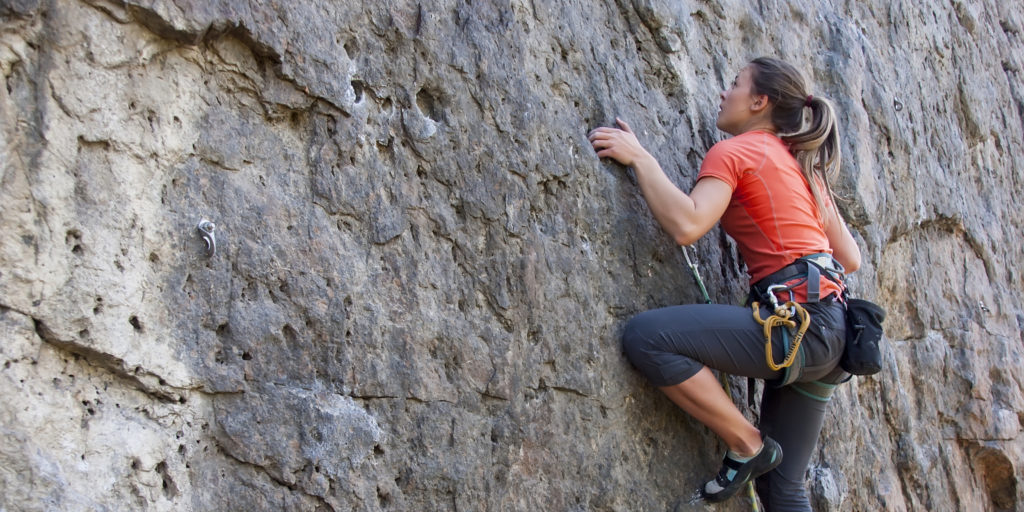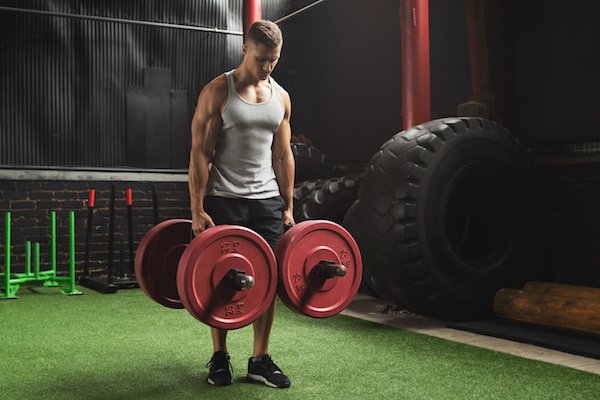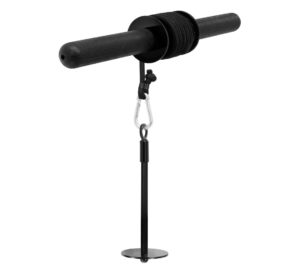Grip is something in strength training called a limiting factor. For example, you can have the back strength to deadlift 600 lbs, but if your grip can’t hold the weight, then you’re limited to what those hands can hold.
At times, improving grip strength can be an incredibly frustrating process. And in my experience as a coach, it’s typically the clients who haven’t had a ton of previous exposure to grip-oriented sports that tend to struggle the most.
This is when grip training needs to get more strategic in nature because simply working with more reps at various weights — while certainly useful — can sometimes not be enough. In this article, we’ll go over five methods and exercises that are fantastic for improving grip strength for nearly every fitness level.
Grip Training Specificity
An important training variable to consider when working to improve grip strength is specificity. Like every muscle group, I like to think about grip as having multiple levels that need to be trained and accounted for. For example a strong grip should include:
- General Strength: A baseline foundational level of grip strength.
- Muscular Endurance: The ability to hold desired loads for various amounts of time.
- Maximal Strength: The capability to hold maximal weight per one’s overall strength.
The types of grip strength above can help shape your grip training based on where you’re falling short. If you can define why you want to improve your grip in the first place, then you can build in and implement strategic exercises and methods that make the most sense.
For example, if you want to improve your grip endurance for an activity like rock climbing, then pulling maximal deadlifts (per your grip strength’s abilities) may not be the best way to approach your desired adaptation.

1. Tempos and Holds
Great for Training: General strength, muscular endurance, and maximal strength
Tempos and holds can be used for more than improving lifting postures and increasing time under tension for hypertrophy gain. These training tools can also be fantastic for improving grip strength in nearly every respect when applied to various pulling exercises with calculated intensities.
Examples of How to Apply Them to Your Training
- For General Strength: Use 1-2 second holds at the top or mid-rep pauses on working set deadlifts that are anywhere from 60-85% of your 1-RM.
- For Endurance: Use 3+ second eccentric tempos on exercises like cable, dumbbell, and inverted rows.
- For Maximal Strength: Perform 1-2 second holds at the top of 85%+ 1-RM deadlifts.
2. Holds From a Pull-Up Bar
Great for Training: General strength and muscular endurance
Holds from a pull-up bar are often times underutilized when it comes to improving grip strength. If your goal is specific to climbing, then few exercises will have as much carryover to your performance than this movement. The best part of performing these is that the barrier to entry is incredibly low, and holds are very easy to scale for multiple fitness levels.
Examples of How to Apply Them to Your Training
- For General Strength: Perform 4-5 sets of holds for 10-20-seconds at the end of your workout. You can even perform shorter hold times with one hand if you’re advanced.
- For Strength Endurance: Perform 3-4 sets for max holds at the end of your workout.
3. Farmer’s Carries
Great for Training: General strength, muscular endurance, and maximal strength
Another fantastic grip training exercise are farmer’s carries. This movement is simple in nature and can be performed virtually anywhere, in fact, every week that you go grocery shopping you’re essentially performing a modified farmer’s carry. No matter your training goal, this movement can be easily applied to boost grip strength.
Examples of How to Apply Them to Your Training
- For General Strength: Walk with a challenging weight for 30-40 steps and perform 3-4 set on back days.
- For Endurance: Walk with a slightly lighter weight for 40+ steps and add holds at the beginning and end of your step count.
- For Maximal Strength: Walk with a very challenging weight for 20-40 steps for 2-3 sets.

4. Towel Work
Great for Training: General strength, muscular endurance, and maximal strength
The use of a towel for pulling work is a fantastic grip strengthening tool. Grip strength is often defined in three ways including crushing, pinching, and gripping strength, and towel training can help you accomplish pretty much all three within one set. The best part of towel training is that you can perform it anywhere and in any gym setting…all you need is a towel!
Examples of How to Apply Them to Your Training
- For General Strength: Perform towel chin-ups for 3-5 reps and aim for 2-3 sets.
- For Endurance: Instead of using a t-bar row grip or traditional handles during cable rows, swap in a towel and work through your hypertrophy was normal with this grip.
- For Maximal Strength: Perform towel chin-up for 2-4 weighted and aim to hit 1-2 sets.
5. Wrist Rollers

The Yes4All Forearm Blaster is a solid option for those considering a cost-efficient wrist roller to use at home or bring to the gym.
Great for Training: Muscular endurance
If you’re trying to improve the muscular endurance of your grip and forearms, then few things compare to the classic wrist roller. This is a hockey and lacrosse player staple and that’s for good reason. This exercise modality will leave both your forearms and grip strength toasted and it doesn’t take much weight to do so, so it’s a good low impact option for grip training.
- For Endurance: Perform 4-5 sets with a wrist roller and moderate at the end of grip intensive workouts.
6. Snatch Grip Deadlift
Great for Training: General strength, muscular endurance, and maximal strength
What’s the best posterior training exercise for tackling grip strength, too? Insert the snatch grip deadlift. The snatch grip deadlift is a humbling exercise and can help build grip without adding a ton of extra load to your current training volume. Virtually everyone can perform this movement once they understand the form and gain benefits from it.
Examples of How to Apply Them to Your Training
- For General Strength: Perform 5-7 reps with moderate intensities for 3-5 sets.
- For Endurance: Perform 6+ reps with lighter/moderate intensities and work in tempos to increase time under tension.
- For Maximal Strength: Perform 3-5 reps at heavier intensities for 3-5 sets.
Wrapping Up
Grip strength is something every athlete should strive for. Whether you compete in strength sports or traditional sports, a strong grip can have a ton of carryover to performance.
If you’re trying to directly improve your grip strength, then classify what exactly you want to improve upon and structure training strategies accordingly!
Grip Training FAQs
What are the different types of grip strength?
Generally, grip strength is broken into three categories including:
- Pinching — The use of the hand and fingers to produce a force that’s held outside of heavy forearm use. This is typically trained with things like plate pinches, which only include the thumb and fingers.
- Gripping — The combination of our hand’s grip and forearm to produce force. This is often trained with pulling movements.
- Crushing — The use of the hand and forearm to squeeze or crush something. This would resemble most grip training devices or grip specific machines.
What are the best exercises for improving grip strength?
There are a ton of exercises that can help you improve strength, but a good place to start is by using farmer’s carries, snatch grip deadlifts, and deadlifts with holds.
Is strong grip a must for resistance training?
Not necessarily, but it’s certainly beneficial!
A strong grip will allow you to perform heavier movements for more reps. In addition, a strong grip can support your safety during various exercises and activities.